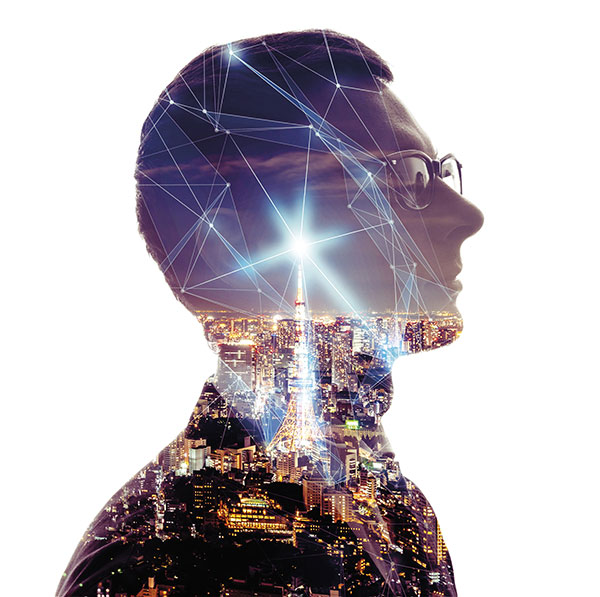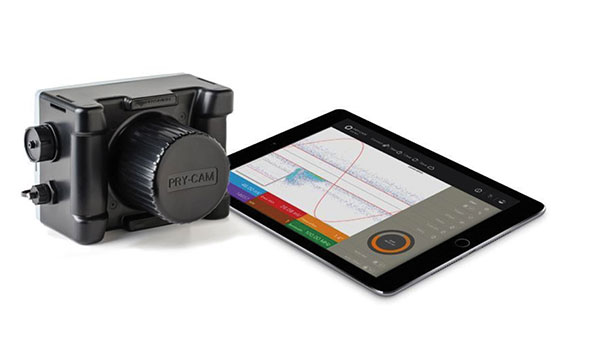A commitment confirmed
by a new important award
Getting Things Done
A commitment confirmed by a new important award

The international association JAC awarded Prysmian Group’s plant in Slatina, Romania, for its sustainability performance.
A new important international award confirmed Prysmian Group’s commitment to sustainability along with its efforts in promoting CSR in all business areas, including social, environmental and economic fields.
Prysmian Group’s plant in Slatina, Romania, the largest optical cable plant in Europe, has received special recognition from the Joint Audit Cooperation for its excellent performance in sustainability. JAC is an international association made up of the main telecommunications operators, which assesses and promotes the implementation of best CSR practices in production facilities operating in the industry worldwide. The award was assigned after an audit and assessment process was carried out through visits and interviews with management and plant workers. The performance of the Corporate Social Responsibility policies adopted by Prysmian in Slatina were judged as excellent, with an overall score of 96.9 out of 100 and an ‘A’ rating.
The Slatina plant stood out in, and obtained a score of 100%, the following areas: ‘Health and Safety’, ‘Working Hours’, ‘Business Ethics’, ‘Child Labour and Juvenile workers’, ‘Forced Labour’, ‘Freedom of Association’ and ‘Disciplinary Practices’. JAC also highlighted the quality and effectiveness of the management system of the plant, opened in 2017 with the aim of expanding the Group’s capacity to meet the growing global demand for optical cables. Andrea Pirondini, Chief Operating Officer of Prysmian Group, stated that the award confirmed “Prysmian Group’s commitment to promoting initiatives and projects that aim to create value for all stakeholders, particularly the communities and territories in which we operate”.
AN OUTSTANDING TRACK RECORD
Prysmian boasts a strong positioning in the main international sustainability indices and assessments of sustainability, including the Dow Jones Sustainability Index and Carbon Disclosure Project. The Group is also continuously improving its standing thanks to its efforts in innovation with dedicated activities. These include research into submarine cables with deep-water installation capabilities that can be installed at up to 3,000 metres and the development of “Lead Less” technology for eliminating lead from energy cables. Another noteworthy project is the ongoing research into 525 kV HVDC cable systems with P-Laser technology, capable of guaranteeing a higher carrying capacity. In addition, in the Telecom business, the optical cable FlexTube set another industry record with 6,912 fibres, reducing the impact of works in the installation process.
HEADQUARTERS’ DAY
Prysmian Group’s eco-friendly, innovative and futuristic offices were celebrated at a special event supported by universities and architect associations.
Prysmian Group hosted a special event dedicated to the new Group Headquarters named ‘Prysmian Group Headquarters: The Building Structure and the Work Spaces’. The aim of this was to showcase the innovative and eco-friendly features of the entire architectural project designed by Maurizio Varratta.
The renowned architect managed to create this vital building, transparent and full of light, with complete respect for economic, structural and sustainable feasibility. The event was organised by Zinteck, a Venice-based company who form part of the Cordifin Group, with the support of the Milan and Venice Architects Associations, their respective Foundations and the Polytechnic of Milan. Zinteck contributed to the implementation of the Prysmian Group headquarters in Milan by designing the roof covering, part of the façades and certain interior design details.
TAKING PRIDE IN SUSTAINABILITY
Among the many participants who took the floor at the event held at Prysmian Auditorium’s stage, Andrea Pirondini, Prysmian Group COO, commented on the great success of the initiative and the sense of pride brought about by the new HQ: “not only from an architectural and structural point of view, but also in terms of sustainability". He concluded: "Each detail of our new home has been designed in the name of energy efficiency and smart working, to improve the way people work and the impact of our activities on the environment".
All attendees took part in an HQ guided tour and were offered a remarkable volume of information dedicated to the project, including technical drawings and a set of high-quality images.
A BUILDING AWARDED WITH THE PLATINUM LEED CERTIFICATION

Prysmian Group Headquarters received the LEED Platinum certification, the highest level of certification awarded by the US Green Building Council. The LEED certification is the standard of reference in assessing environmentally friendly buildings. It classifies buildings according to their levels of environmental sustainability, with regard to all aspects of their construction.
Prysmian headquarters are designed to contain costs and allow work to be approached in a more environmentally friendly manner, as well as to protect the planet and contribute to making the Group’s business more sustainable.
THE JOURNEY TOWARDS THE DIGITAL WORLD

From Industry 1.0 to Industry 4.0, the new industrial revolution is reshaping the boundaries between the physical and digital worlds.
While steam and water power characterised the first Industrial Revolution, the second introduced electricity which allowed for the mass production of goods. The third Industrial Revolution saw the Internet digitise the connection between people and devices. The fourth wave is currently in progress and is reshaping the boundaries between the physical and digital worlds, blurring into a seamless and interconnected ecosystem. Splitting the 3.0 technologies from 4.0 technologies is not easy as what sets aside Industry 4.0 solutions is not technological complexity, but the compliance with two key principles: connectivity enabling collaboration between the physical and digital spheres, and automatisation. The definition of automatisation is a system equipped with intelligence which can make decisions on which task to perform and the best way to do it.
AN INDUSTRIAL METAPHOR. In Industry 4.0, data is the lifeblood of decision-making processes. To use an industrial metaphor, data is akin to raw materials, information is the components, and decisions are the final products. Machines today are capable of analysing data at unparalleled levels for three main reasons: they collect and analyse volumes of data much larger than human brains can; they work both as microscopes and telescopes by highlighting the small details and big pictures of datasets; and machines collect and analyse data in real time. While Industry 3.0 devices address each contingency through long codes written by software engineers, Industry 4.0 devices write and rewrite their own code starting from examples they analyse and, just like humans, learn from new experiences and failures.
MACHINES MAKE HUMANS MORE EFFECTIVE. Overall, humans remain better decision makers than machines because of our ability to adapt to many different domains, but machines can make humans more effective and efficient by making them able to take advantage of their ability to understand complex data and make better decisions in specific domains, for example driving cars or forecasting customer demand.
PRY-CAM, A GREAT INDUSTRY 4.0 CASE

All connected devices can transfer to the cloud, either Prysmian Group’s or the client’s, a whole set of information that can be accessed in real time and from any location both by our technicians and the client. Roberto Candela, CEO Prysmian Electronics at Prysmian Group
PRY-CAM represents a perfect Industry 4.0 case. It consists of a technology and of a suite of electronics based products for the online acquisition of Partial Discharge (PD) and other key parameters to monitor and assess the conditions of electrical systems. Data collected are stored on a cloud platform for data analysis and processing. As Roberto Candela, CEO of Prysmian Electronics, explains: “all connected devices can transfer to the cloud a whole set of information that can be accessed in real time and from any location and analysed by ways of a proprietary artificial intelligence algorithm”.
A TRUE REVOLUTION IN THE MONITORING SYSTEMS INDUSTRY BASED ON MACHINE LEARNING. PRY-CAM data processing is based on a machine learning artificial intelligence algorithm, PRYCAM BRAIN. The more PD data are collected and analysed, the more the algorithm develops and extend its analysis capabilities. Today the cloud database hosts more than two million pieces of information about PD. The analysis of this huge amount of data would have required hundreds of human experts in the past, nowadays the PRY-CAM algorithm alone performs this task and generates hundreds of data analysis reports on a daily basis. “All connected devices can transfer to the cloud a whole set of information that can be accessed in real time and from any location and analysed by ways of a proprietary artificial intelligence algorithm”, stated Roberto Candela, CEO Prysmian Electronics at Prysmian Group.
A GOOD EXAMPLE TO UNDERSTAND THE DIGITAL SHIFT
Driverless cars can help to understand the paradigmatic shift of Industry 4.0 devices, because to drive this disruptive innovation, the very nature of the problem has been changed. Industry 3.0 software engineers would have tried to teach cars how to handle every single situation through long receipts of code, while in Industry 4.0, engineers provide cars with data about surrounding environments. Therefore, cars have become independent in analysing data and finding the best navigation solutions. Cars gather data from different sources: the pre-mapped environment, with sensors updating pre-maps, by gaining data about moving shapes such as pedestrians, and by sharing localisation data with other vehicles. As cars acquire more data about what's happening in our streets, their autonomous driving systems become more reliable and will soon outperform humans in terms of driving ability.
